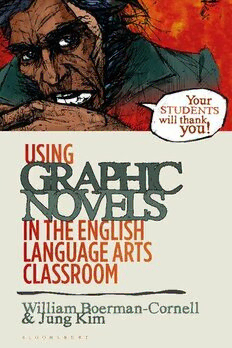
Using Graphic Novels in the English Language Arts Classroom PDF
217 Pages·2020·9.576 MB·
Most books are stored in the elastic cloud where traffic is expensive. For this reason, we have a limit on daily download.
Preview Using Graphic Novels in the English Language Arts Classroom
Description:
There is an increasing trend in teachers using graphic novels to get their students excited about reading and writing, using both original stories and adaptations of classic works by authors such as Homer, Shakespeare, and the Brontes. However, there is surprisingly little research available about which pedagogies and classroom practices are proven to be effective.This book draws on cutting-edge research, surveys and classroom observations to provide a set of effective methods for teaching with graphic novels in the secondary English language arts classroom. These methods can be applied to a broad base of uses ranging from understanding literary criticism, critical reading, multimodal composition, to learning literary devices like foreshadowing and irony.The book begins by looking at what English language arts teachers hope to achieve in the classroom. It then considers the affordances and constraints of using graphic novels to achieve these specific goals, using some of the most successful graphic novels as examples, including Maus; Persepolis; The Nameless City; and American Born Chinese and series such as Manga Shakespeare. Finally, it helps the teacher navigate through the planning process to figure out how to best use graphic novels in their own classroom. Drawing on their extensive teaching experience, the authors offer examples from real classrooms, suggested lesson plans, and a list of teachable graphic novels organized by purpose of teaching.
See more
The list of books you might like
Most books are stored in the elastic cloud where traffic is expensive. For this reason, we have a limit on daily download.
